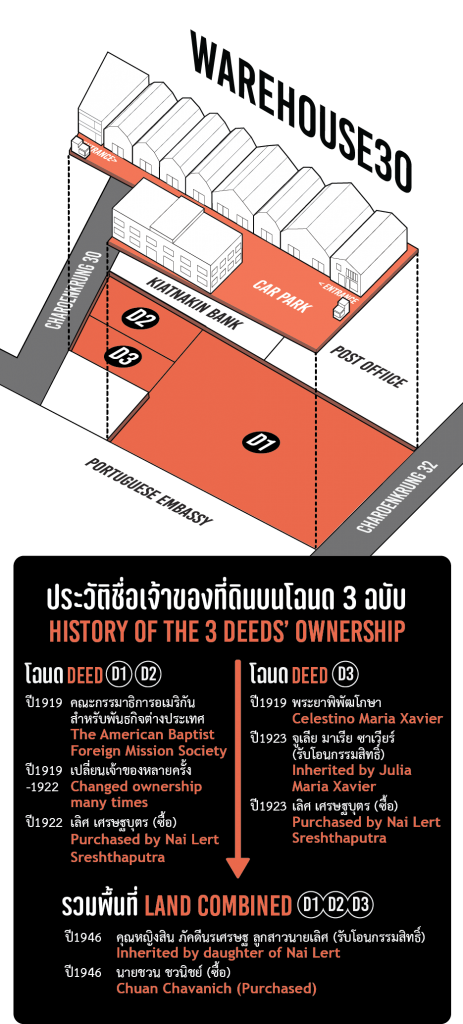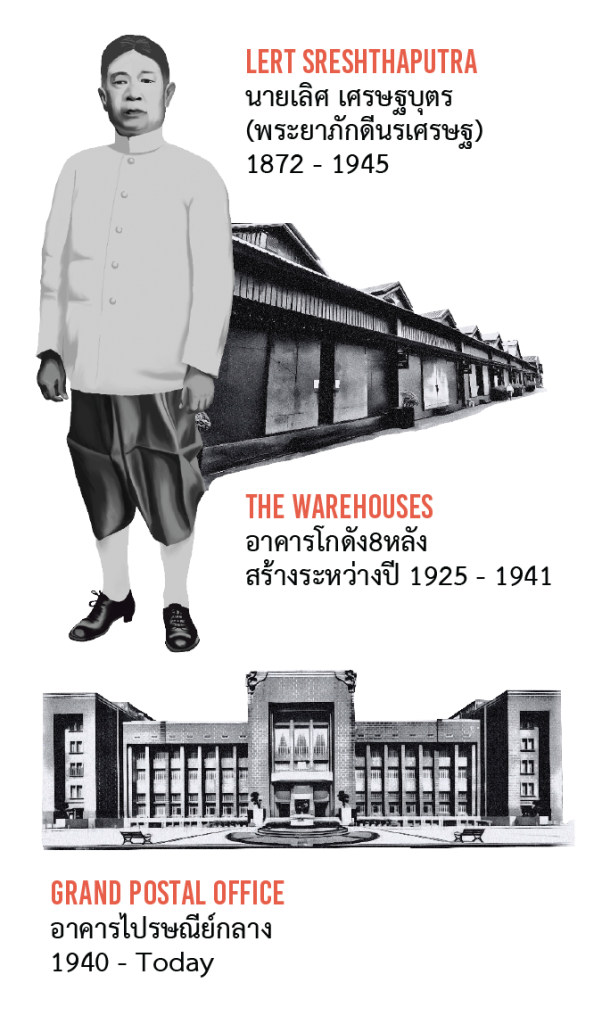About
The History of the Chavanich Property and How Warehouse 30 was Created
History of Warehouse30 and the neighborhood

สถานทูตโปรตุเกส
Let’s begin the story with our neighbore, the Portuguese Embassy. Remember the wall out front housing a large mural by the Portuguese graffiti artist Vhils? Behind that wall is a plot of land extending to the Chao Phraya River that Rama II let the Vietnamese Emperor Gia Long use as a temporary refuge.
.
After the fall of Ayutthaya, the Portuguese were the first Westerners to try to re-establish trade relations and Siam needed arms and munitions to protect its borders. To encourage such trade, Rama II offered the same land to Portugal to use as a trading port and consulate. Our neighbor was the first Western foreign consulate in the Rattanakosin era.
.
The first Consul of Portugal to Thailand was Carlos de Manuel Silveira. King Rama II favored him with a title equal to a Thai nobleman. He played his diplomatic role well, welcoming all newcomers to Siam, even the Protestant missionaries, whereas others viewed them with suspicion and even hate. The diplomatic palace standing here today was built in the mid 1860s blending Thai elements with Portuguese colonial style.
คณะอเมริกันแบ๊บติสท์ บอร์ด
During the reign of King Rama III, the American Baptist Foreign Mission Society sent a series of missionaries to Siam to prepare them for eventual assignment to China. China wouldn’t allow them entry whereas Siam did. Reverend John Taylor Jones with his wife Eliza Grew Jones were true pioneers of this American missionary fervor. Carlos de Manuel Silveira helped them to rent accommodations behind the Portuguese Consulate.
.
As more missionaries arrived, the Mission built a chapel, dwellings, a printing press, a type foundry, a book bindery and library. In fact Dr. Dan Beach Bradley brought the first Thai language printing press to the Baptist Mission on Captain Bush Lane between 1835 and 1838. The printing house finally started printing all the religious tracts, fliers and books that had been translated into Thai. All the Protestant sects, Baptist, Congregational, and Presbyterian recognized that publications were an important tool for winning converts.
กัปตันจอห์น บุช
Captain Bush Lane was named for the Englishman John Bush who came to serve as Harbor Master in1853, during the reign of Rama IV. His knowledge, abilities and ingenuity in performing official duties resulted in his receiving royal titles. In the reign of Rama V he served as Commander of the Royal Barge and captained several trips for him to Singapore and India in 1870 and 1871 so “Captain” was added to his name. Privately, he set up the first shipyard of Phra Nakhon, called Bangkok Dock and became very wealthy. He built a grand house on the banks of the Chao Phraya River near The Harbour Department’s office. Today no trace of Captain Bush’s house remains, only a memorial. People had been calling the lane where it was located “Captain Bush Lane” from the time it was built but currently it is officially known as Soi Charoenkrung 30.
ตระกูล Maria Xavier
The patriarch of the Xavier’s family was a Maccanese immigrant who settled in the Rosario community around 1840, named Joaquim Maria Xavier and he served in the courts of Rama III and IV and V.
.
His son, Luis Maria Xavier settled in Talat Noi behind the Kalawar (Holy Rosary) Church. He was translator for the Harbor Department and started his own rice mills. The prosperous Xavier clan donated money for construction of the Kalawar Church so the Xaviar family name still appears under the stained-glass windows.
.
Luis’ son, Celestino Maria Xavier, eventually became The Permanent Undersecretary of the Ministry of Foreign Affairs for Rama VI. He also invested in real estate, being one of four who built Si Phraya Road. Other family business included the first public transport system with trams covering 33 kilometers to Pak Nam. His daughter Margaret Lin Xavier became the first female doctor in Thailand.
นายเลิศ เศรษฐบุตร
He received the title of Phraya Pakdi Norasreth, “Beloved Millionaire,” from Rama VI. He is remembered as a uniquely innovative businessman who helped the Siamese elite adopt and adapt to the fashions of the 20th century. He started a department store to import foreign delicacies, sold the latest phonograph equipment, imported cars, built filling stations and continued innovating to satisfy commuters by providing a variety of auto, bus, taxi, and boat services. He is especially remembered for importing ice making equipment to Bangkok.
.
He astutely built a vast real estate empire. His most famous deal was the 1922 swap of rice land in Ploenchit as the new site of the British Embassy in exchange for the option to buy the Embassy’s original riverside site. He bought it and promptly sold it to the government as the site of the new General Post Office.
.
It seems that by then Mr. Lert held the deeds to all the land in the vicinity of the post office (including all 3 deeds of the Warehouse30 project). Then World War II erupted, the Japanese Army occupied the area, including the warehouses. When the war ended, Mr. Lert was 71 years old, and his health was deteriorating. After he passed away his heirs were ready to sell it to the interested buyers, Mr. Chuan Chavanich and Mrs. Manee Chavanich.
นายชวน และ นางมานี ชวนิชย์
Mr. Chuan Chavanich, founded Chavanich Company, Ltd. in 1944 and the shophouse he was renting in Talat Noi near Sieng Kong, was too small to accommodate the post-war trade. He needed more space to store large quantities of raw materials before exporting them to the United States. Having heard that Nai Lert didn’t want the land which the Japanese had occupied, he had expressed his own interest in it, and when the time was right he and his wife Manee bought this land along with the warehouses.
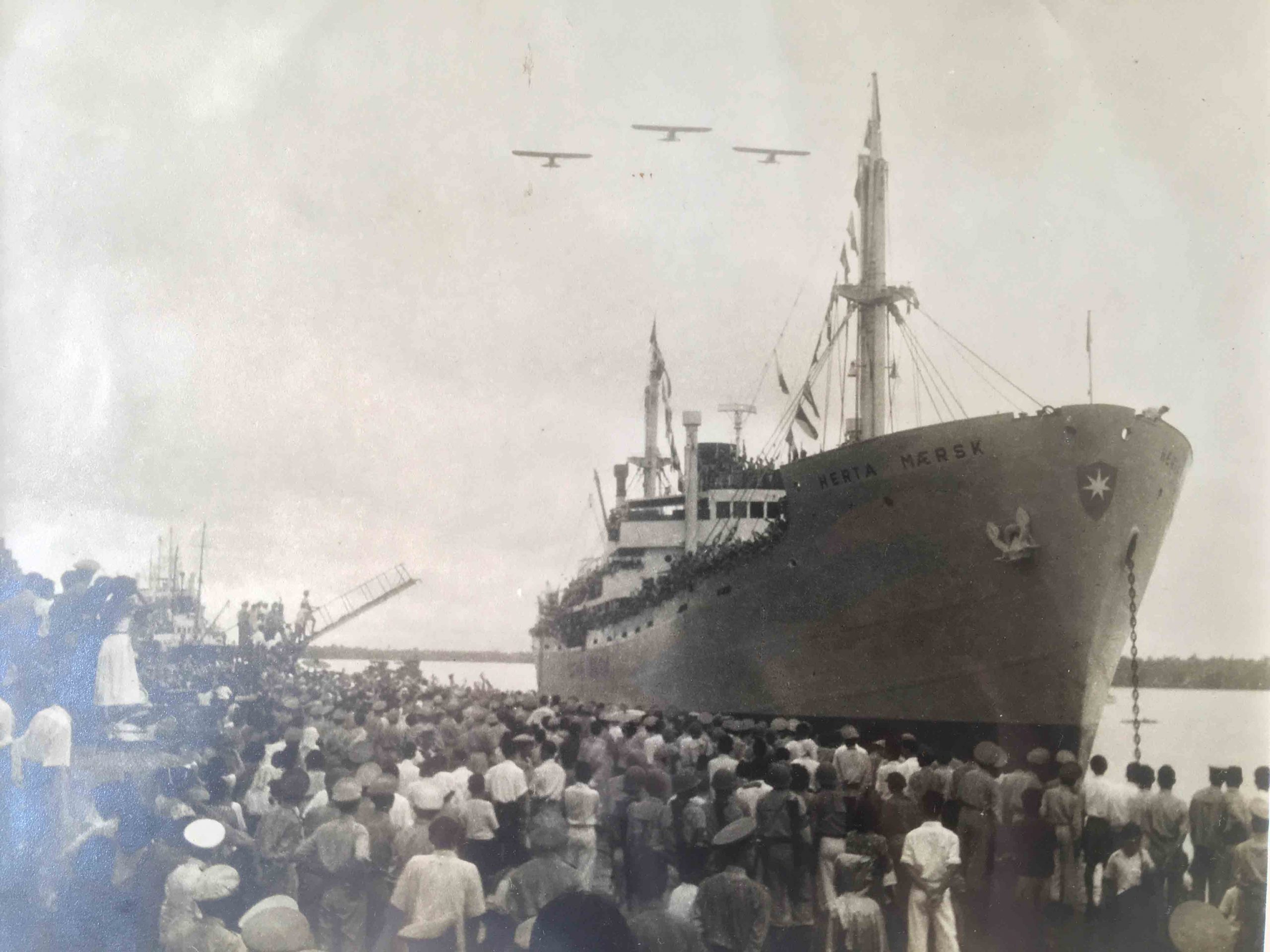
They also hired “Mr. Meng” to build the Chavanich Building as the company’s office. It is still located at house number 48, Captain Bush Lane, (Soi 30, Charoenkrung Road).

หลังสงครามโลกครั้งที่ 2
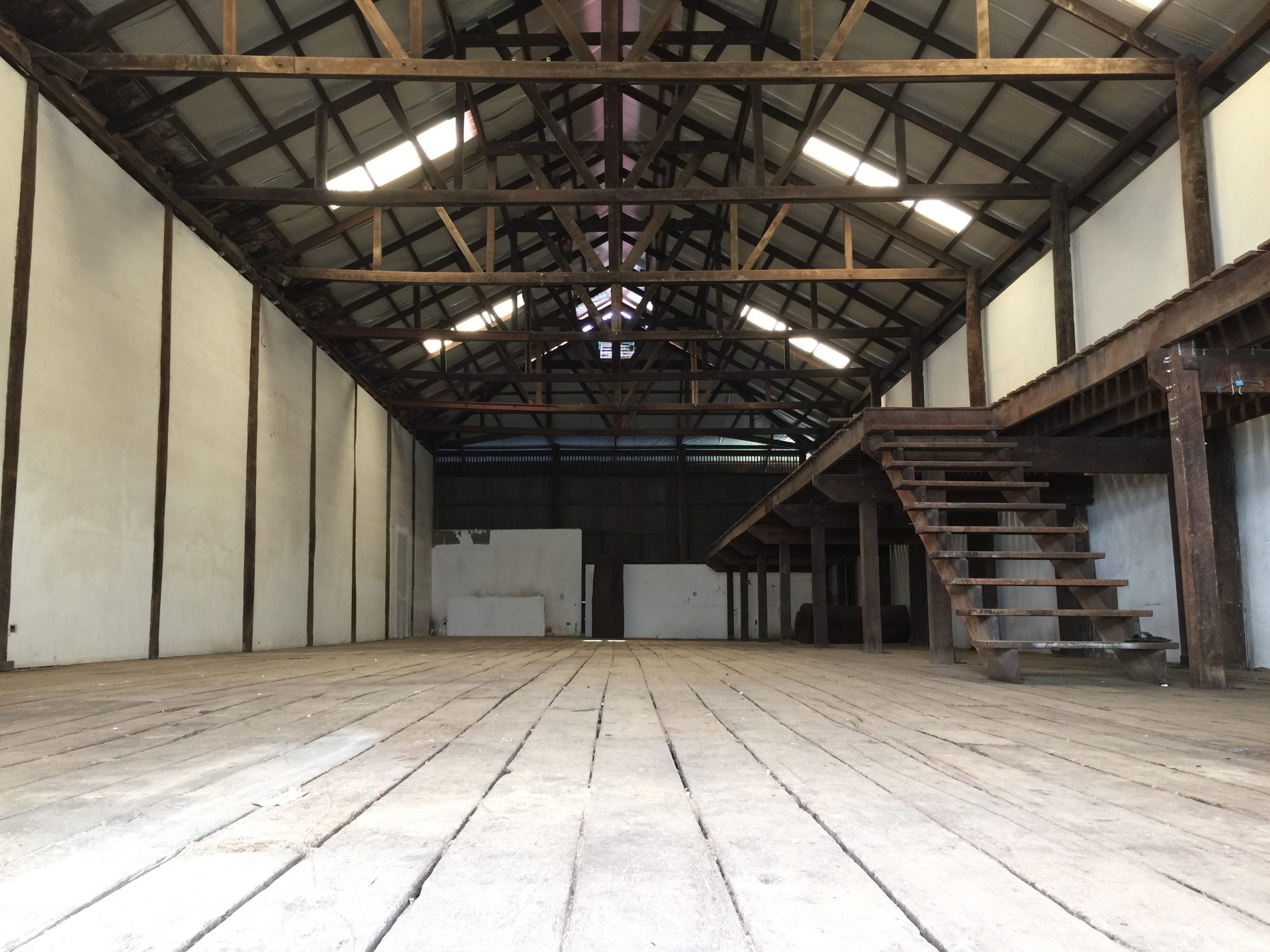
The construction of the warehouses appears on maps starting in 1925-1941. We assume the original purpose was to store rice collected from mills before export. As for the World War era, the Japanese army used the warehouses for general storage and were never bombed by the Allies. From the time the Chavanichs owned the warehouses, they were used for storage or raw materials and industrial products. Any unused space was rented out to a wide variety of industrial tenants and they continued to be used for storage until rental for the dilapidated buildings became very low. The use of the warehouses has changed over the decades. The minerals and raw storage changed to tractors and agricultural equipment before locomotive engine parts and railway station furniture made their way inside. The original wooden floors, exposed beams and steel structure retained a heritage look. It was during the 1970s that all those items were moved out and businesses like Michelin Tires and Triumph took over the warehouses. The rent was low, so there was never a shortage of people willing to use these warehouses for storage.
.
When Prida Chavanich came to own the property, he considered tearing all the old warehouses down to construct a more modern three-story commercial center. The only thing that stopped him, besides the hefty construction costs, was the fact he would never be capable of recouping those costs through the rent. Since the city’s business center had moved away from the river after the war, there was no way he could charge more for this space than any of the other buildings in this older part of town.
จุดกำเนิดโครงการ Warehouse30
At this time, the Bangrak community was developing an awareness and appreciation of the heritage buildings in its neighborhood and one of the proponents of retaining and repurposing old buildings was the famous architect Duangrit Bunnag. He had worked his magic at the Jam Factory across the river—and he had a vision for repurposing and transforming these old warehouses too. Warehouse 30 was born!
.

The inside of the renovated Warehouse 30 is full of shops, cafés, restaurants, and galleries, which is a far cry from all the machinery and locomotive parts of the past. Duangrit Bunnag restored the outside of the building, so it would not lose any of its appeal. He also left much of the inside unchanged, except for the few scenarios where the interior needed to be adapted to fit the requirements of the tenants. The one thing that was not negotiable on the inside was the original wooden floors. Those needed to stay to retain the old warehouse feel. Before the opening of Warehouse 30 in 2016, the original godowns had adapted to the changing times quite well! so we can verify that these warehouses were never left abandoned.
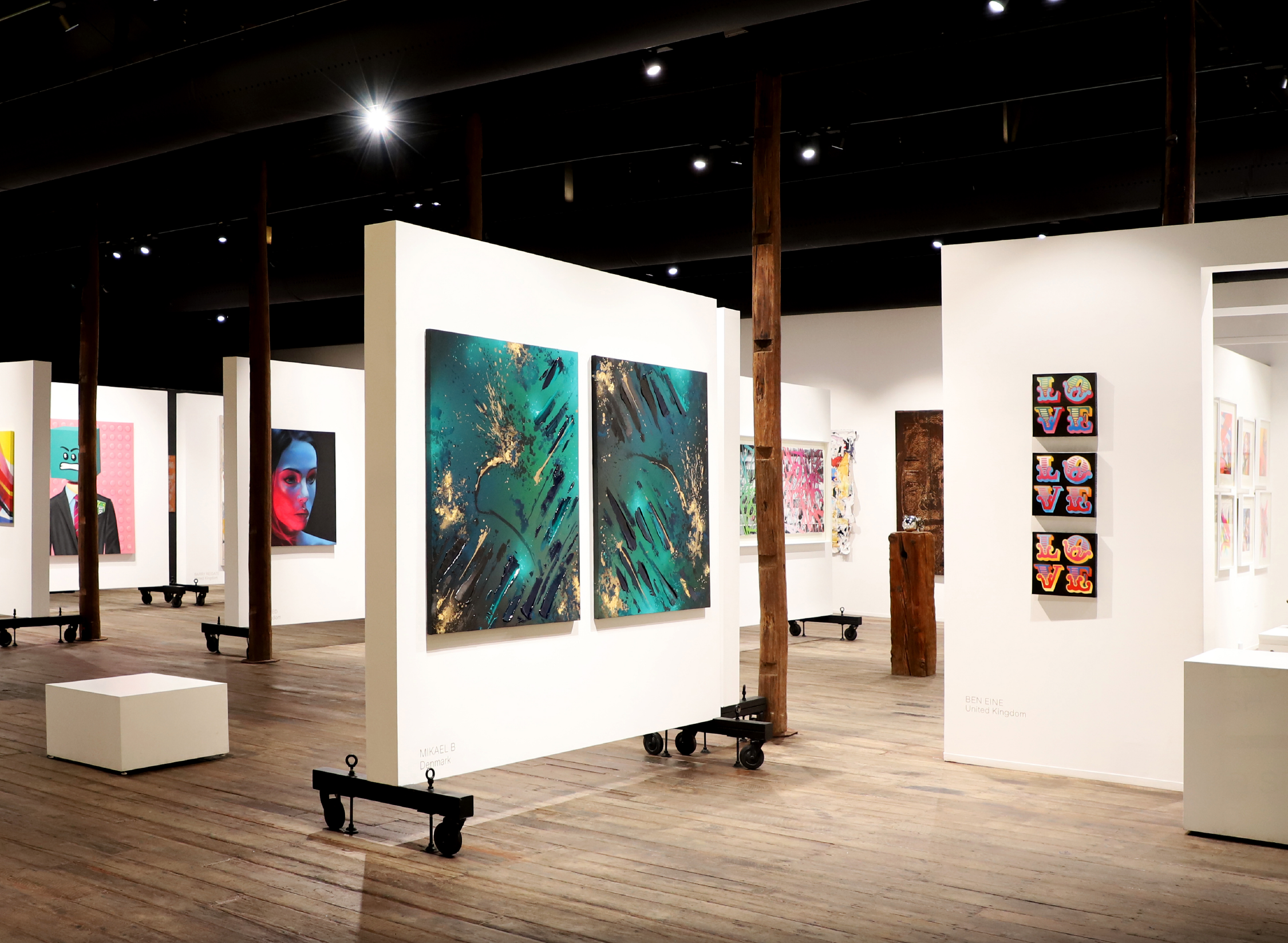
When you arrive at Warehouse 30 and dont know where to begin, check out the old warehouses that were commandeered by the Japanese during World War II and survived untouched. We recommend starting to look around by simply following the long corridor leading past the 8 separate “godowns” and make discoveries along the way. You will love exploring this historical warehouse, while enjoying all the modern features it now contains.
